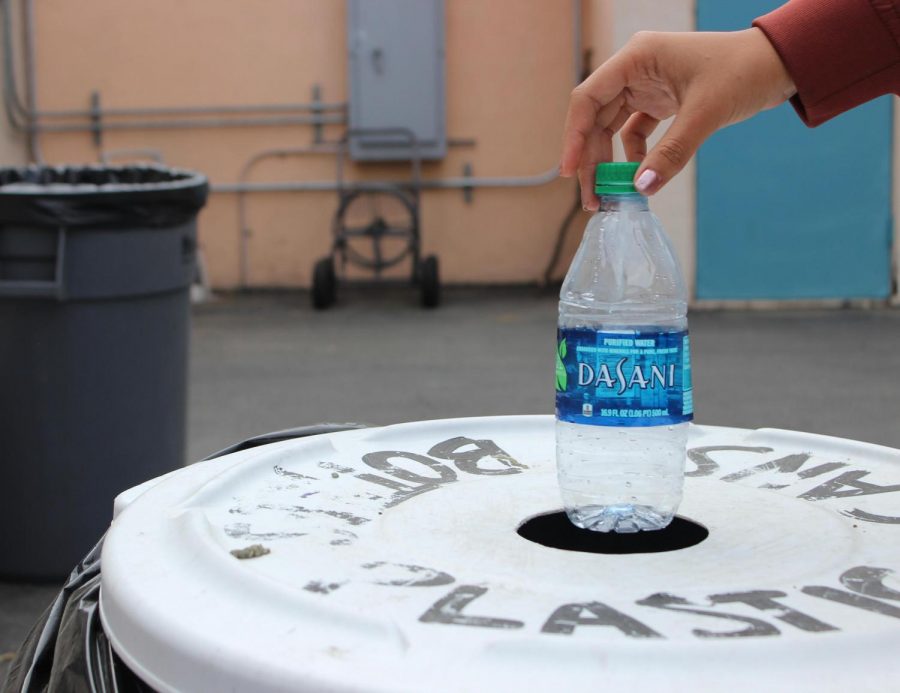Stricter environmental laws are needed to preserve Earth
Many blue recycling bins are scattered across campus in order to get more students to recycle their empty bottles and to prevent littering.
April 22, 2019
In recent years, the fast increase of global carbon emissions and pollution are having far-reaching consequences on the environment, such as global warming. With current projections, it is estimated that the world has just over a decade to take preventative action before it’s too late. Not enough is being done as governments and corporations refuse to take action to combat these severe effects, despite the existence of several viable alternatives and proposed legislation.
The damages from carbon emissions are evident today and for the past decade. The rate at which hurricanes are increasing around the world is far more frequent. The amount of precipitation is fluctuating, with northern areas receiving more than the south where droughts are now frequent. Ice in the Arctic is melting fast and with it, sea levels are rising.
In California alone, these effects are more prominent considering the diversity of the region. From 2012 to 2016, the state was caught in a long-lasting drought. These droughts contributed to the influx of wildfires ravaging both the land and vegetation, affecting the state’s incredibly diverse ecosystem. Crop yields are decreasing, a dangerous situation for a state that relies heavily on its agricultural industry. Not to mention, rising sea levels pose a major threat as many of the cities in the states are located by the coast and are at risk for flooding.
To combat these changes, California is setting its own environmental protection laws. Former Governor Jerry Brown committed to 100 percent renewable energy status by 2045, the only other state to do so is Hawaii. Additionally, he entered California in the United States Climate Alliance, alongside several other states and cities within the country such as New York and Washington. When President Donald Trump took action to leave the Paris Accord on June 11, 2017, California rightfully stepped up to better manage the effects on the environment.
According to the Social Energy Industries Association, most solar energy systems in the country are located in California and the state should be seen as a model for the rest of the country. Being more environmentally conscious isn’t a rare concept. Many places are already being powered by renewable energy, including Aspen, Colorado, and Burlington, Vermont.
However, the actions the state of California and these few cities are taking aren’t enough to combat the effects of climate change unless they are applied to every city, state and country immediately. Alternatives include reducing plastic disposal through more efficient waste management, cutting down carbon gas emissions by using the renewable energy sources available and imposing more regulations on industries to encourage the use of plastic alternatives and environmentally friendly production processes. More funding should be devoted to scientific research that works on finding more alternatives and actual solutions.
Not every solution currently exists but the preventative measures and alternatives that do exist need to be enforced.









